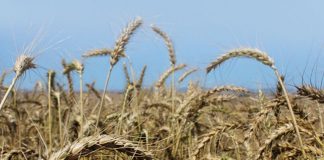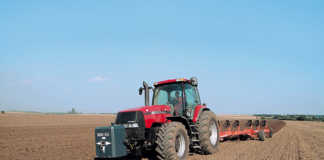Year-on-year to November 2013, white and yellow maize prices decreased by 6% and 7% respectively from R2 265/t to R2 405/t for white maize and from R2 400/t to R2 224/t for yellow maize. “The outlook is good also because SA agriculture is focusing more purposefully on integrating the value chain,” he said. “Soya is a good example, with expansion in processing capacity promising 1,8 million tons of crushed soya per year after March.
“South Africa will nevertheless still be a net importer of soya beans and soya bean cake for some time to come.”
Producers planned to plant 1,62 million hectares to white maize, 1,16 million hectares to yellow maize and 504 700ha to sunflower in the 2013/2014 season, according to the National Crop Estimates Committee. Soya beans were estimated at 516 500ha, groundnuts at 46 900ha, sorghum at 62 620ha and dry beans at 43 550ha.
“Given the 2012/2013 drought in the western production areas and the virtually depleted soil moisture levels, we can safely assume the number of hectares to be reduced (by)at least 10% in 2014,” said Mirador Agri director, Albe Mouton. Groenewald said SA was experiencing the second-lowest maize stock levels in two decades. These would be reduced further, should Zimbabwean demand continue to grow.
SA maize ending stock for 2013 was estimated to be 1 095 000t, insufficient to cover the pipeline requirement, while soya bean levels were likely to remain flat. The poor yields in 2012/2013 have left South Africa with only 70% of its sunflower pipeline requirements. A 22% increase in hectares under sunflower was expected due to the recent drought.
Meanwhile, government is seemingly not too concerned about the dependence on imported wheat, according to Grain SA CEO Jannie de Villiers.
“Profitability is the only factor driving this industry. New cultivars with higher yields and improved pest- and disease-resistance could improve the situation. Failing this, we expect the decrease in hectares to continue,” he said.
Wheat farmers are expected to plant 480 000ha this season (511 200ha last season). “The slightest glitch in international supplies may impact this industry seriously overnight,” said De Villiers.
The forecast for the 2013 wheat crop was estimated at 1,79 million tons. Rain during harvesting at the end of last year reportedly influenced wheat quality. De Villiers said SA had to increase its sorghum production to about 600 000t to meet the demands of the new biofuel sector in the 2014/2015 season.
Also read:












